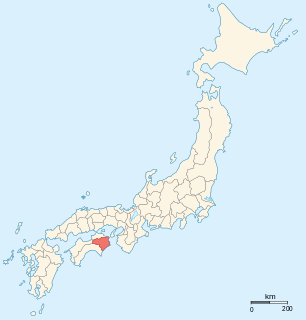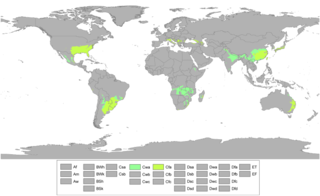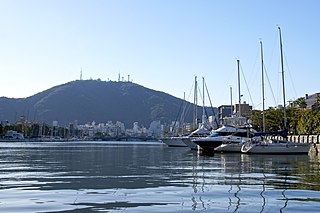This article needs additional citations for verification .(May 2013) (Learn how and when to remove this template message) |
| Tokushima 徳島市 | |||
|---|---|---|---|
| City | |||
| Tokushima City | |||
 | |||
| |||
 Location of Tokushima in Tokushima Prefecture | |||
| Coordinates: 34°4′N134°33′E / 34.067°N 134.550°E Coordinates: 34°4′N134°33′E / 34.067°N 134.550°E | |||
| Country | Japan | ||
| Region | Shikoku | ||
| Prefecture | Tokushima Prefecture | ||
| Government | |||
| • Mayor | Akiyoshi Endo (since April 2016) | ||
| Area | |||
| • Total | 191.23 km2 (73.83 sq mi) | ||
| Population (july 1, 2018) | |||
| • Total | 321,654 | ||
| • Density | 1,700/km2 (4,400/sq mi) | ||
| Symbols | |||
| • Tree | Elaeocarpus | ||
| • Flower | Cherry blossom | ||
| Time zone | Japan Standard Time (UTC+9) | ||
| City hall address | 2-5 Saiwai, Tokushima-shi, Tokushima-ken 770-8571 | ||
| Website | www | ||
Tokushima(徳島市Tokushima-shi, Japanese: [tokɯꜜɕima] ) is the capital city of Tokushima Prefecture on Shikoku island in Japan.

A city is a local administrative unit in Japan. Cities are ranked on the same level as towns and villages, with the difference that they are not a component of districts. Like other contemporary administrative units, they are defined by the Local Autonomy Law of 1947.
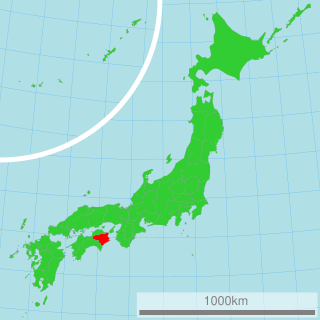
Tokushima Prefecture is a prefecture of Japan located on Shikoku Island. The capital is the city of Tokushima.

Japan is an island country in East Asia. Located in the Pacific Ocean, it lies off the eastern coast of the Asian continent and stretches from the Sea of Okhotsk in the north to the East China Sea and the Philippine Sea in the south.
Contents
- History
- World War II air raid
- Culture
- Climate
- Education
- Geography
- Mountains
- Rivers
- Sister cities
- Gallery
- References
- External links
As of October 1, 2016, the city had an estimated population of 258,237 and a population density of 1,400 persons per km². Its total area is 191.23 km². The city is situated in the north-eastern part of Tokushima Prefecture at the mouth of the Yoshino River. In terms of layout and organization, Tokushima displays the typical characteristics of a Japanese castle town. Tokushima was developed under the Hachisuka clan. Its prosperity was built on a strong indigo dye industry.

In biology, a population is the number of all the organisms of the same group or species, which live in a particular geographical area, and have the capability of interbreeding. The area of a sexual population is the area where inter-breeding is potentially possible between any pair within the area, and where the probability of interbreeding is greater than the probability of cross-breeding with individuals from other areas.
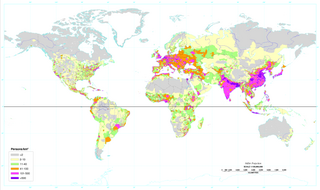
Population density is a measurement of population per unit area or unit volume; it is a quantity of type number density. It is frequently applied to living organisms, and most of the time to humans. It is a key geographical term. In simple terms population density refers to the number of people living in an area per kilometer square.

The Yoshino River is a river on the island of Shikoku, Japan. It is 194 km (121 mi) long and has a watershed of 3,750 km2 (1,450 sq mi). It is the second longest river in Shikoku, and is the only river whose watershed spreads over the four prefectures of the island.
The modern city of Tokushima was founded on October 1, 1889. At the time, it was the 10th largest city in Japan. The city is served by Tokushima Airport (recently renamed to Awa Odori Airport), in nearby Matsushige.
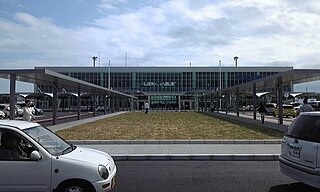
Tokushima Awaodori Airport is a joint civil-military public airport in Matsushige, Tokushima, Japan, near the city of Tokushima.

Matsushige is a town located in Itano District, Tokushima Prefecture, Japan.






